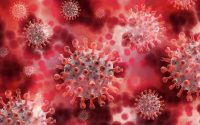Study reports low risk for COVID-19 in Emergency Medical Service personnel exposed to aerosol-generating procedures
Amid the coronavirus disease 2019 (COVID-19) pandemic, caused by the severe acute respiratory syndrome coronavirus 2 (SARS-CoV-2), healthcare providers working on the frontlines are a particularly high-risk group for infection. Though vaccination efforts prioritized this group, working directly with COVID-19 patients makes them at risk of contracting the virus.
The U.S. Centers for Disease Control and Prevention (CDC) reports that emergency medical service personnel exposed to aerosol-generating procedures (AGP) on COVID-19 patients are generally at low risk of infection. The findings, published in CDC’s Emerging Infectious Diseases, support clinical strategies that maintain established and evidence-based practices for emergency conditions.
.jpg)
In the study, the researchers investigated the risk of COVID-19 patients transmitting SARS-CoV-2 to emergency medical service (EMS) providers providing aerosol-generating procedures (AGP) in King County, Washington, in the United States.
COVID-19 and aerosol-generating procedures (AGP)
Respiratory exposure is the primary mode of COVID-19 transmission. When an infected patient coughs, sneezes, breathes or speaks, virus-laden droplets are expelled into the air. Inhaling infectious droplets or touching contaminated surfaces (known as ‘fomites’) could lead to infection.
The global pandemic has also forced EMS providers to consider how best to manage their potential exposure since they cater to all patients with unknown infections status. In previous coronavirus outbreaks, like the severe acute respiratory syndrome (SARS) in 2003 and the Middle East respiratory syndrome (MERS) in 2012, many healthcare workers became infected while caring for patients.
Though many studies have tackled the risk of patients transmitting SARS-CoV-2 to healthcare workers, little is known about transmitting it to first-line responders or emergency medical responders.
Guidelines have improved over the years to reduce the risk of transmission, especially through aerosolizing procedures used for airway management and cardiopulmonary resuscitation (CPR). Having a better understanding of the risks tied to patient care can help improve clinical practices, infection control measures, and the use of personal protective equipment (PPE) strategies.
The study
The researchers performed a retrospective cohort study to evaluate the risk for SARS-CoV-2 infection among EMS providers caring for patients between February 16 and July 31, 2020, in King County, Washington. The study considered all EMS provider-patient encounters and individual EMS providers involved.
The team utilized a statewide COVID-19 registry to arrive at the study findings and identified 1,115 encounters, 182 with more than one AGPs, including endotracheal intubation, supraglottic airway insertion, bag-valve-mask (BVM) ventilation, nebulizer medication therapy, and continuous positive airway pressure nonrebreather mask oxygen.
Further, the study considered EMS providers at risk for transmission from a patient for two to 14 days after an encounter with a COVID-19 patient. If an EMS provider tested positive for SARS-CoV-2 in the two to 14 days incubation period after exposure, the infection was tied to the encounter.
The results showed that encounters with COVID-19 patients accounted for 1 percent of all 911 EMS responses, involving over 1,200 unique COVID-19 patients and thousands of patient-provider encounters during the study period. An estimated 16 percent of the encounters involved treatment with AGPs. However, of the 30 COVID-19 cases among EMS providers, 29 were not related to COVID-19 patient encounters.
Overall, the team found that the COVID-19 incidence among EMS providers was 0.57 infections per 10,000 person-days, which is considered low-risk.
We observed a very low risk for COVID-19 infection attributable to patient encounters among EMS first responders, supporting clinical strategies that maintain established practices for treating patients in emergency conditions,” the researchers explained in the study.
Hence, mitigation strategies and the use of PPE can effectively protect against contracting SARS-CoV-2 during emergency patient care.
- Brown, A., Schwarcz, L., Counts, C. et al. (2021). Risk for Acquiring COVID-19 Illness among Emergency Medical Service Personnel Exposed to Aerosol-Generating Procedures. U.S. Centers for Disease Control and Prevention (CDC) Emerging Infectious Diseases. https://doi.org/10.3201/eid2709.210363, https://wwwnc.cdc.gov/eid/article/27/9/21-0363_article.
Posted in: Medical Science News | Disease/Infection News | Healthcare News
Tags: Coronavirus, Coronavirus Disease COVID-19, CPR, Healthcare, Infection Control, Infectious Diseases, Oxygen, Pandemic, Personal Protective Equipment, PPE, Research, Respiratory, SARS, SARS-CoV-2, Severe Acute Respiratory, Severe Acute Respiratory Syndrome, Syndrome, Virus

Written by
Angela Betsaida B. Laguipo
Angela is a nurse by profession and a writer by heart. She graduated with honors (Cum Laude) for her Bachelor of Nursing degree at the University of Baguio, Philippines. She is currently completing her Master's Degree where she specialized in Maternal and Child Nursing and worked as a clinical instructor and educator in the School of Nursing at the University of Baguio.
Source: Read Full Article


